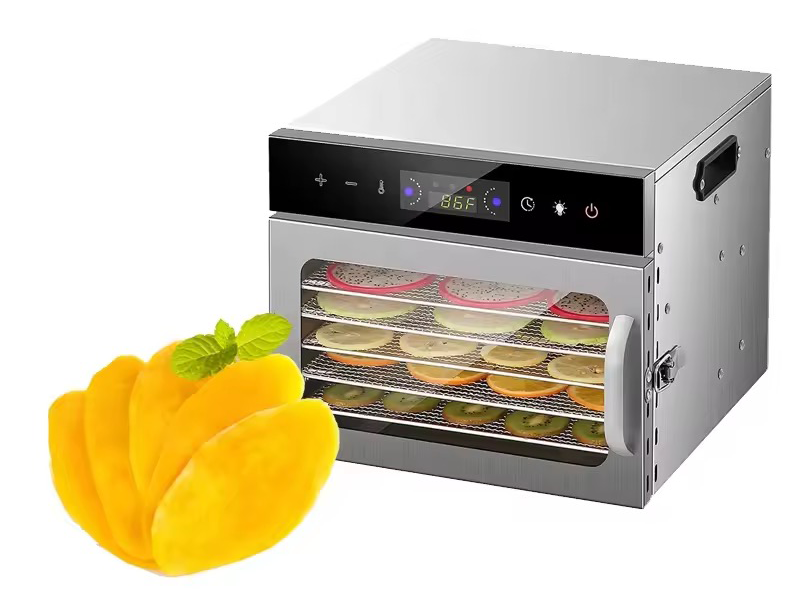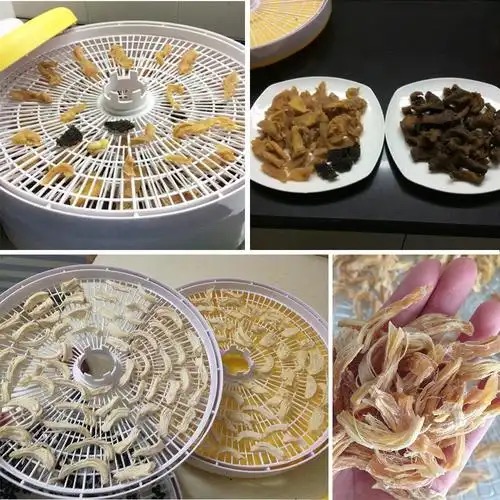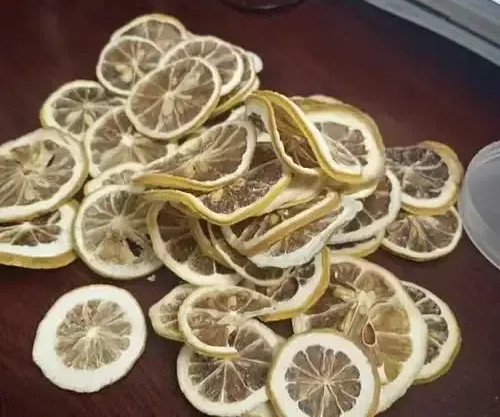
Content Menu
● Introduction
● Understanding Food Drying Machines
>> Types of Food Drying Machines
● Key Features of Food Drying Machines
>> 1. Energy Efficiency
>> 2. Drying Temperature Control
>> 3. Moisture Removal Efficiency
>> 4. Versatility
>> 5. Operational Noise Level
● Advantages of Heat Pump Dryers
● Advantages of Condenser Dryers
● Applications of Food Drying Machines
● Factors Influencing Your Choice
>> 1. Type of Food Being Dried
>> 2. Volume of Production
>> 3. Budget Constraints
>> 4. Space Availability
>> 5. Maintenance Requirements
● Best Practices for Using Food Drying Machines
>> 1. Pre-treatment of Food
>> 2. Proper Loading Techniques
>> 3. Regular Maintenance Checks
>> 4. Monitoring Moisture Levels
>> 5. Storing Dried Foods Correctly
● Conclusion
● Frequently Asked Questions
>> H2 1: What Is the Main Difference Between Heat Pump and Condenser Dryers?
>> H2 2: Which Dryer Is More Energy Efficient?
>> H2 3: Can I Use Both Types of Dryers for All Food Items?
>> H2 4: How Long Does It Take to Dry Food in Each Type of Dryer?
>> H2 5: Are There Any Maintenance Requirements for These Dryers?
Introduction
Food drying is an essential process in food preservation, enhancing shelf life while maintaining nutritional value and flavor. In the realm of food drying machines, two popular technologies are heat pump dryers and condenser dryers. This article explores the features, benefits, and applications of these machines, helping you make an informed decision on which is better for your needs.

Understanding Food Drying Machines
Food drying machines utilize various methods to remove moisture from food products. The primary goal is to reduce water content to a level that inhibits microbial growth and spoilage.
Types of Food Drying Machines
1. Heat Pump Dryers: These machines use a heat pump system to extract moisture from food while maintaining a controlled temperature environment. They are energy-efficient and suitable for various food types.
2. Condenser Dryers: These operate by using a heat exchanger to condense moisture from the air inside the dryer. While they may dry food faster than heat pump dryers, they can consume more energy.
Key Features of Food Drying Machines
When choosing between a heat pump dryer and a condenser dryer, consider the following features:
1. Energy Efficiency
- Heat pump dryers are known for their energy efficiency, often reducing operational costs significantly compared to condenser dryers.
- Condenser dryers may have higher energy consumption due to their drying method.
2. Drying Temperature Control
- Heat pump dryers typically offer a wider range of temperature settings (20°C to 80°C), allowing for precise control over the drying process.
- Condenser dryers usually operate at higher temperatures, which can affect the quality of sensitive foods.
3. Moisture Removal Efficiency
- Heat pump dryers excel in moisture removal without compromising food quality, making them ideal for delicate items like fruits and herbs.
- Condenser dryers can be effective but may require longer drying times due to moisture retention in the recycled air.
4. Versatility
- Heat pump dryers can handle a variety of food types, including vegetables, fruits, meats, and seafood.
- Condenser dryers are also versatile but may not perform as well with certain delicate items.
5. Operational Noise Level
- Heat pump dryers tend to operate more quietly than condenser dryers, making them suitable for environments where noise is a concern.

Advantages of Heat Pump Dryers
- Energy Savings: Heat pump technology allows these dryers to use less energy compared to traditional methods.
- Gentler Drying Process: The lower temperatures help preserve the color, flavor, and nutritional content of food.
- Environmentally Friendly: By utilizing ambient heat and reducing energy consumption, heat pump dryers are more sustainable.
- Consistent Quality: The controlled environment ensures that food maintains its texture and taste throughout the drying process.
Advantages of Condenser Dryers
- Faster Drying Times: Generally, condenser dryers can dry food more quickly than heat pump models.
- Lower Initial Cost: Typically, condenser dryers have a lower purchase price compared to heat pump dryers.
- Simplicity: They are often easier to operate with straightforward controls.
- Less Space Required: Many condenser models are compact and can fit into smaller spaces compared to some heat pump units.
Applications of Food Drying Machines
Food drying machines are used across various industries:
- Agriculture: Preserving surplus crops for off-season sales is crucial for farmers looking to maximize profits.
- Food Processing: Creating snacks like dried fruits and jerky has become increasingly popular among health-conscious consumers.
- Pharmaceuticals: Dehydrating herbs and natural ingredients for supplements is essential in producing effective health products.
- Catering Services: Preparing ingredients in bulk for restaurants or events helps caterers manage large orders efficiently.
Factors Influencing Your Choice
When deciding between a heat pump dryer and a condenser dryer, consider the following factors:
1. Type of Food Being Dried
Certain foods require specific drying conditions. For example:
- Fruits like apples or bananas benefit from low-temperature drying to maintain their sweetness and color.
- Meats require higher temperatures but should still be monitored closely to avoid overcooking.
2. Volume of Production
If you're processing large quantities of food regularly:
- A heat pump dryer might be more suitable due to its efficiency over time.
- Conversely, if you only need occasional drying for small batches, a condenser dryer may suffice.
3. Budget Constraints
Initial costs can vary significantly:
- Consider not only the purchase price but also long-term operating costs associated with energy consumption.
4. Space Availability
Evaluate your workspace:
- Heat pump dryers tend to be larger due to their complex systems; ensure you have adequate space for installation.
5. Maintenance Requirements
Both types require regular maintenance:
- Heat pump dryers might need less frequent servicing due to their efficient design but can be more complex if repairs are needed.
Best Practices for Using Food Drying Machines
To maximize the efficiency and effectiveness of your food drying machine:
1. Pre-treatment of Food
Pre-treating foods can enhance quality:
- Blanch vegetables before drying to preserve color and nutrients.
- Soak fruits in lemon juice or saltwater solutions to prevent browning.
2. Proper Loading Techniques
Avoid overcrowding:
- Ensure even spacing between items for optimal airflow.
3. Regular Maintenance Checks
Keep your machine in top shape:
- Clean filters regularly and check seals for any wear or damage.
4. Monitoring Moisture Levels
Use moisture meters:
- Regularly check moisture levels in dried products to ensure they meet safety standards.
5. Storing Dried Foods Correctly
Store in airtight containers:
- Keep dried foods in cool, dark places to extend shelf life further.
Conclusion
Choosing between a heat pump dryer and a condenser dryer ultimately depends on your specific needs. If energy efficiency and gentle drying are priorities, then a heat pump dryer is likely the better choice. However, if you need faster drying times and lower upfront costs, a condenser dryer may be more suitable.
In summary, both types of food drying machines offer unique advantages that cater to different requirements in food processing and preservation. By considering factors such as the type of food being dried, production volume, budget constraints, space availability, and maintenance requirements, you can make an informed decision that best suits your needs.

Frequently Asked Questions
H2 1: What Is the Main Difference Between Heat Pump and Condenser Dryers?
Heat pump dryers use ambient heat to dry food at lower temperatures efficiently, while condenser dryers rely on higher temperatures and condensation methods for moisture removal.
H2 2: Which Dryer Is More Energy Efficient?
Heat pump dryers are generally more energy-efficient than condenser dryers due to their ability to recycle heat during the drying process.
H2 3: Can I Use Both Types of Dryers for All Food Items?
While both types can handle various foods, heat pump dryers are better suited for delicate items like fruits and herbs due to their controlled temperature settings.
H2 4: How Long Does It Take to Dry Food in Each Type of Dryer?
Condenser dryers typically dry food faster than heat pump dryers; however, drying times can vary based on the type of food and moisture content.
H2 5: Are There Any Maintenance Requirements for These Dryers?
Both types require regular maintenance such as cleaning filters and ensuring proper airflow; however, heat pump dryers may need less frequent servicing due to their efficient design.












